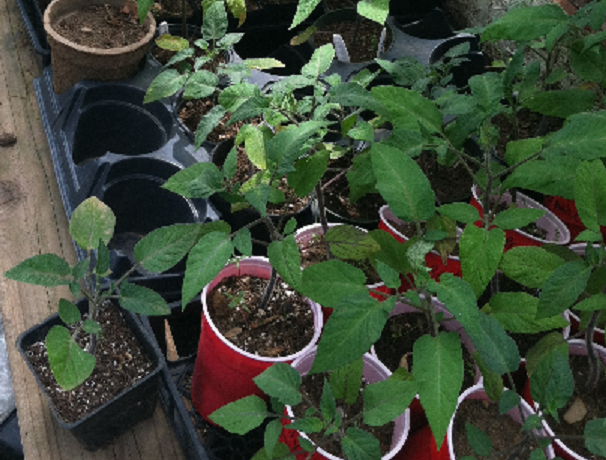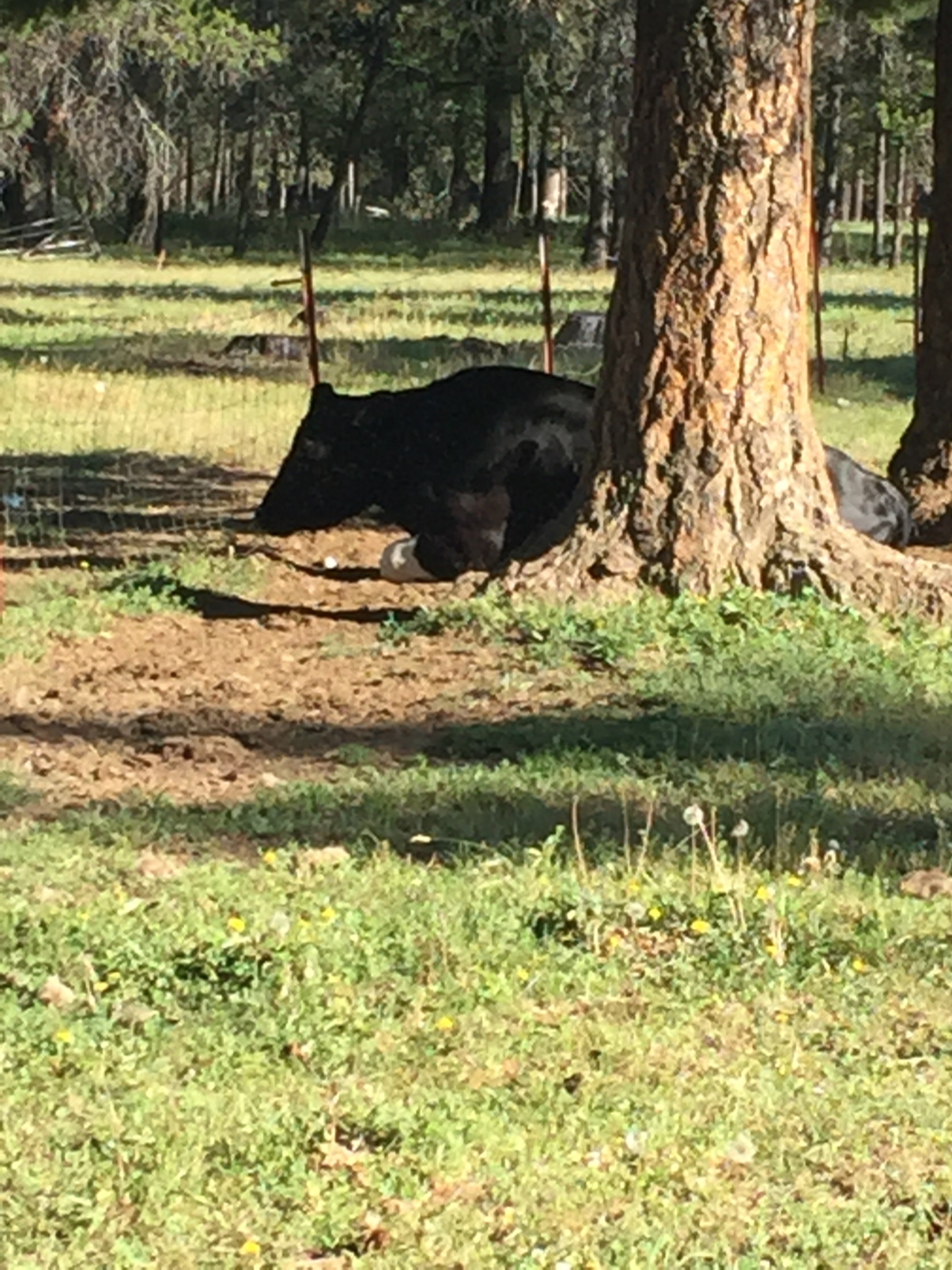A Semi-comprehensive Appraisal Of One Very Tenacious Tomato

The view from my dining room table is always amusing. As I type this, my palomino Quarter Horse gelding is using his loafing shed as a rump scratching device. Probably not it's intended use, but most things on my farm are not used or behave in their intended way. Kula, my horse, has now moved on to the head scratching section of his day, and my eyes have moved on from his form and over to the greenhouse that we built from scrap materials. We had a massive windstorm last fall, and as we had built the roof out of salvaged glass, we have quite a project ahead of us replacing the silica carnage that resulted from that particular squall. Beholding the green house made me think of tomatoes, which in turn made me think of tomato varieties, for it is that time of year; seed selection time!
Our climate is inland mountain, which means we typically have low humidity and cool nighttime temperatures in the summer. One growing season was a very long sixty-two days between frosts. Tomato growing utopia North Idaho is not. That said, I might have a problem with being told that it's hard, impossible, or I shouldn't do something. I'm pretty sure that seed companies love naive idealists like myself. At least I have years of gardening errors and successes to share with other people!
As I start getting my seed orders ready for the year, I thought I would share some of my favorite varieties with all you Steemians. We'll start with the variety of tomato that I think could possibly survive nuclear winter: Stupice
Fun Facts
- It is pronounced Stew-peach-ka. I'm a phonetic fool, so I walked around saying Stew-pie-sss for a few years. I'm hope to one day atone to people from Eastern Europe for my language-butchering sins.
- Which brings me to fun fact number two: This tough tomato hails from the Czech Republic. They know how to breed a tomato to face adversity in that part of the world.
- They are a potato-leafed variety, typically yield fruit in 55-60 days, and their taste is a nice balance between acidic and sweet.
- They are an open-pollinated variety, and I have saved and grown seeds from my Stupice tomatoes many times.
The only possible negative for some people that I can think of is the fruit is small to medium in size. The plant also yields fruit in clusters. Neither of these traits bother me at all, but there are people like my Papa out there, who think bigger is better. I have grown gigantic heirloom tomatoes too, but in the end I like them all. The most important things to me are hardiness, disease resistance, and yield. Color, size, and how the plants and fruit look in general is not really my focus.
Here are a few things my Stupice plants over came:
The great mouse seedling massacre of 2012. My cats were on strike, as I had switched their food from chicken to fish. As part of their community organizing, they let vermin into my storage shed where I have a grow light seed starting system. Even though there was an entire box of sunflower seeds free for the taking, those little rodential creeps must have been chlorophyll deficient, for they massacred a few hundred tomato seedlings. The Stupice, however, laughed in the face of a rodent attack, and stood tall against a potential onslaught of a nibbling feastival. After tense negotiations with the barn cats, I righted the great food wrong, and the vermin population has been kept in check since.
Snow in June. The winter of 2008-09 broke all snowfall records. I shoveled six feet off of my roof, twice. Due to our climate being somewhat fickle, I leave my tomato plants in a high tunnel all summer long. I had some extra Stupice, however, and planted them in rows outside the hoop house. It snowed June tenth, but it never did drop below freezing, and those little plants survived that little dusting of snow and yielded just fine.
The great bovine pruning of 2014. I raised a bottle calf from four days old to butcher weight over a thirty month period. Flynn was a very special part of our family, he also thought he was a giant dog, and at sixteen hundred pounds; he had quite an appetite. One morning Flynn felt the need for a little red sauce and greens in his diet and pruned seventy-five tomato plants before I could get him caught. Guess which variety he didn't get? That's right, Stupice! He might have avoided them due to the potato leaves, but I honestly think that he didn't want to go toe to toe with an Eastern European powerhouse.
All in all, Stupice is a great variety to give a try. It will adapt to most things thrown at it climate and care-wise. It's always good to grow a few things that are almost idiot proof, so that when you go to bed at night you can sleep the sleep of smug-gardener success. Trust me, something else will pop up to burst your ego-bubble, but at least you'll have one moment of “I'm AWESOME” when you pick your first Stupice cluster off of the vine.
Here's a couple seed sources for Stupice
Baker Creek Heirloom Seeds
Totally Tomatoes
And a Stupice Wiki:
Last but not least, here is a picture of Flynn the Steer, chewing his cud in tomato-scented triumph!

